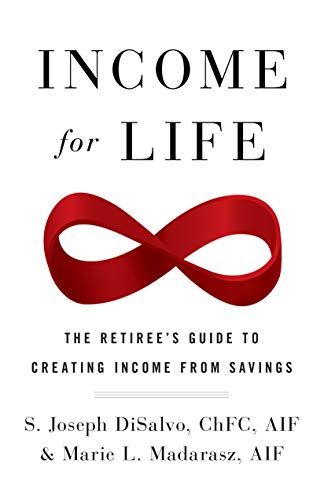Between the years of 1946 and 1964, seventy-six million babies were born in the United States. At this moment, nearly a quarter of the American population is on the verge of retirement—and some have already passed that threshold. Americans are now retiring earlier than any other time in history. Concurrently, they are also living longer than ever before.
The confluence of these sociological shifts has created a landscape of uncharted territory for those about to retire. The retirement landscape that Baby Boomers must prepare to navigate is simply not the same world their parents lived in.
Unlike previous generations, who were able to rely on the primary safety nets of social security benefits and pensions, Baby Boomers are best served by learning the fundamentals of investing and the fundamentals of converting their savings to an ongoing, growing income stream.
A solid and well-planned income, investment and tax strategy is where you’ll create the greatest impact on your retirement. Below you’ll learn about five core principles that you will need to follow to become a successful retirement income investor and create a growing stream of income for life.
1. Asset Allocation
Asset allocation is making disciplined, well-educated decisions about what percentage of your assets you will divide between stocks, bonds, and cash.
In fact, academic studies prove time and time again that this decision is what drives 94 percent of investor results. It is not an investor’s ability to pick a winning stock, nor their talent for deciding when is a good time to get in or out of the market, that builds investor success, regardless of what the popular media promotes.
In the end, it’s the decision you make regarding your allocations of stocks, bonds, and cash that will have the biggest impact on your retirement income. Find the right percentage of stocks and bonds that will help you get to where you want to go, which is creating a growing stream of income for life that supports all of your important life goals.
Then keep that percentage balance steady throughout your retirement journey, only revisiting your decision in conjunction with major life events rather than outside, ever-changing noise.
2. Investor Behavior
Throughout your life before retirement, your income and your investments have been separate. For anyone in their working years, that’s been the case. However, for anyone on the doorstep of retirement, or who is already in retirement, income and investments become very intertwined.
It will become increasingly difficult to create a growing stream of income over time if your decision-making is fueled by emotion that is generated by preconceived notions. The consumer investor tends to do the wrong things at the wrong times, for the wrong reasons, usually costing themselves a lot of money over time.
Sticking to a well-thought-out, evidenced-based investment and income strategy, ignoring the hype and fads of the moment, is by no means easy, especially when it pertains to your nest egg that you spent a lifetime saving. But knowing that you have a retirement income and investment plan in place that insulates your retirement income from market declines will help you weather those impulses, both analytically and emotionally.
3. Rebalancing
Rebalancing refers simply to a disciplined, regular process by which an investor maintains their desired asset allocation and diversification through the buying and selling of stocks, bonds, and cash. This process cannot be random or whimsical, as it is important for maintaining your balance and your selected level of risk.
Many investors have no outlined process for buying and selling, and, as a result, they end up with a significantly different level of risk then they initially signed up for; they also may unwittingly suffer a lack of diversification. This breakdown of a portfolio’s structure can ultimately compromise an investor’s important life goals.
For example, say you made the decision in your income and investment strategy to maintain a portfolio of 60 percent stocks, 40 percent bonds. You happen to have an excellent year in the stock market with high returns. You end the year with more stock than when you began the year, and this means that your 60/40 allocation is now off.
With an allocation of 70 percent stocks, suddenly your portfolio has taken on more risk than you were willing to tolerate. It’s time to regain your desired allocation by rebalancing back to your original targets.
4. Diversification
There are generally eleven main building blocks or asset classes that represent a properly diversified portfolio. There are US Large Cap Stock, Small Cap Stock, and Mid Cap Stock, International, Emerging Markets, Real Estate, and more.
Put those ingredients together using a thoughtful framework. The framework may call for different amounts of each element, depending upon many factors, including but not limited to: personal circumstances, general economic conditions, interest rates, and domestic and international events.
Having too much of one type, too little of another, or leaving one out altogether, can ultimately compromise your results.No matter how much or how little risk you’re willing to take on as an investor, it is crucial to have a properly diversified portfolio.
When an investor’s portfolio is properly diversified, we can pretty much count on two things: the investor will never make a killing, but crucially, such a portfolio is never going to get killed. When it comes to your retirement income, diversifying your portfolio properly is the key to smoothing out your ride.
5. Understanding and Identifying Risk
Many investors don’t understand the subtle—but crucial—difference between risk and volatility.
Risk is exposure to the chance of loss or, the degree of probability of putting money into an investment that may permanently lose all of its value. As an example, the probability of loss when investing in an individual stock (one company) is greater than investing in a fund of many stocks (many companies), where the probability of total, permanent loss of value of all the companies in the fund at once is extremely unlikely.
Volatility is how rapidly and dramatically an investment tends to change in price.
If you are worried about the “risk level” of a certain investment, you are worried about the potentially permanent loss of your money. Whereas an investment’s volatility should only be a concern to investors if the money is needed in the immediate or near-term future.
Just because an investment is more volatile does not necessarily mean it is riskier in the long term. As an investment’s time horizon gets longer, the effect of volatility is reduced greatly.
The stock market as a whole is much more volatile than bank CDs or bonds but that does not mean retirees should bypass any investment in the stock market. Instead, it means that investors should know the potential for short-term volatility to affect the value of their investments and plan accordingly.
Turn Your Accumulated Resources into a Stream of Income
Financially speaking, the place where a person can make the single greatest impact on their retirement is in exactly how they plan to turn their accumulated resources, their savings, into income for the rest of their lives.
Other forms of income, like social security and pensions, also come into play; however, we know that where you can have the most ability to impact your retirement income, for good or bad, is in the proper management and distribution of your accumulated savings.
In simple terms, planning income for the distribution phase involves deciding exactly how to create a regular income out of a retiree’s accumulated investments.
The act of constructing a sound retirement income plan requires a commitment to educating oneself on the basics of income, investment and tax planning and to doing the work of creating and sticking to a plan. This investment of time and energy will pay dividends for years to come.
For more advice on retirement income investing, you can find Income for Life on Amazon.
This post was contributed by:

S. Joseph DiSalvo, ChFC, AIF and Marie L. Madarasz, AIF of Quest Capital & Risk Management, Inc. are committed to bringing their clients the clarity that will promote and enhance confidence in the future. For more than two decades they have used a proven process that helps clients think through how best to structure and manage their resources in order to produce a growing stream of retirement income for life.
As experts specializing in all aspects of Retirement Income Planning, they are passionate about the coordination and integration of their clients’ income, investment, and tax planning strategies in order to help clients live the life they’ve worked hard for. Joseph and Marie are strong advocates of financial education, seeking to teach others how to achieve sustained success and lifelong prosperity.




Leave a comment and tell us what you think